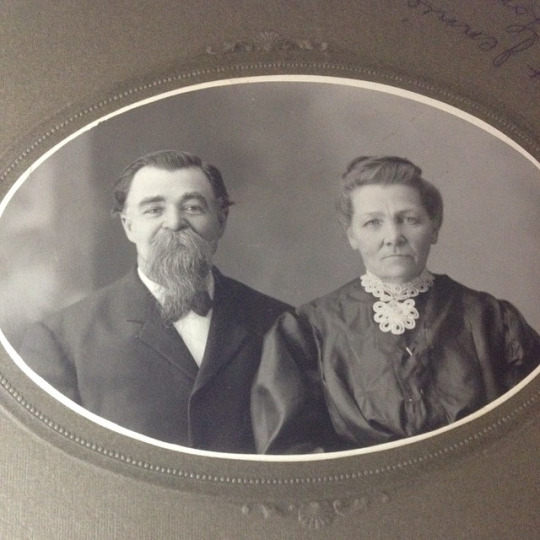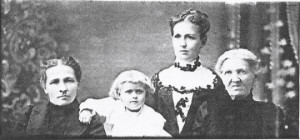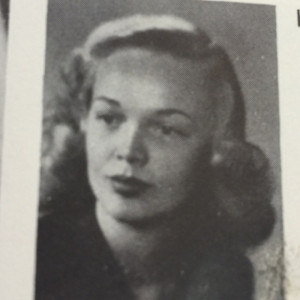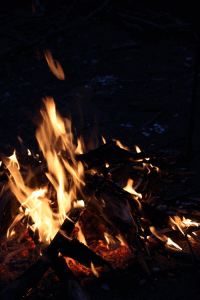 Ancestor and spirit bonds are the most sacred aspects of Samhain in my tradition. This is my personal ritual shared with you in good faith that you’ll use it responsibly for the remembrance of those who made you who you are today.
Ancestor and spirit bonds are the most sacred aspects of Samhain in my tradition. This is my personal ritual shared with you in good faith that you’ll use it responsibly for the remembrance of those who made you who you are today.
You may perform this ritual at your altar, or somewhere else comfortable, or it can be performed at the cemetery with a portable altar. However, it must be stressed that you cannot trespass after cemeteries are closed or in cemeteries where employees might frown upon your ritual work. Any cemetery will do but the magick will be more potent if your ancestors or loved ones are buried there. When in doubt, perform the ritual at home. Do not break the law.
Tools
Method
Perform the opening of the circle if you do that sort of thing.
The spirit object should be anything pertaining to your spirit in question–a photograph, an object they owned, or a piece of parchment paper with their full name written on it. Place an offering bowl of graveyard dirt (much better if it’s from the spirit’s own grave but not required) in front of the spirit’s object.
Place three white candles with matches (I prefer natural implements like wooden matches over lighters). Two candles should be on either side of the spirit object and graveyard dirt with the third candle behind the spirit object. The three candles should form a triangle around the spirit object and graveyard dirt bowl.
As you light each candle, raise it to the sky and recite the following:
“Upon this sacred Samhain night, I offer light to honor [Full Name]’s birth.”
“Upon this sacred Samhain night, I offer light to honor [Full Name]’s life.”
“Upon this sacred Samhain night, I offer light to honor [Full Name]’s death.”
(Hint: Irish-speaking people tend to pronounce Samhain as sow-an and some dialects of Gaelic-speaking people have said it’s like sahv-in, sow-een, shahvin, sowin. The Scots Gaelic spelling is Samhuin or Samhuinn. Learn the proper way your ancestors would say it if you’re of Gaelic or Celtic blood.)
Next you want to take your white flowers. Use your instincts about which type of flowers you think would be best. People in the nineteenth century used white lilies at funerals a lot and I believe carnations were used too. I know Lilies in particular were known as a death flower. If your spirit in question had a favorite flower, use it.
For my purposes, I prefer white roses in rituals that honor spirits long after the funerary period. White roses are symbols of conveying respect, paying homage, and they express hope for the future, which far better suits this type of remembrance ritual as opposed to remaining caught in the sorrow and grief that lilies and carnations can sometimes conjure. It’s important to maintain the distinction between grieving and remembrance. Grief will hold a spirit back. Remembrance will set it free.
Hold your bunch of flowers toward the sky. Say, “Upon this sacred Samhain night, I offer flowers to honor [Full Name]’s spirit.” Place the flowers below the spirit object and graveyard dirt offering bowl. Essentially the spirit object and bowl should be at the center of a diamond–lit candles marking the side points and top point with the bunch of flowers marking the bottom point.
Then recite a prayer, a spell for peace, a poem, or even a song. Since you’re working for the remembrance of an individual spirit or generally remembering all your ancestors, this type of ritual can be personalized. If your spirit had a favorite fitting poem or favorite fitting song, recite the words for them. If you’re not sure, I found this poem online a few years ago and I quite like it for this ritual. You may use it too.
Do not stand at my grave and weep
I am not there, I do not sleep
I am a thousand winds that blow,
I am the softly falling snow
I am the gentle showers of rain,
I am the fields of ripening grain
I am in the morning hush,
I am in the graceful rush,
Of beautiful birds in circling flight
I am in the starshine of the night
I am in the flowers that bloom
I am in a quiet room
I am in the birds that sing
I am in each lovely thing
Do not stand at my grave and cry,
I am not there, I do not die.
(Mary E. Frye, 1932)
Then you should say something to the effect of, “[Full Name], may your spirit know the love and inspiration you’ve given the living upon this Samhain night. Go in peace. I honor thee. So mote it be.” I don’t often say so mote it be since I’m not Wiccan but I figured a lot of you out there are and you can use it. My version is only slightly different. I say, “I honor thee. Through your wisdom, I wish to see. Fare the well until our reunion and great jubilee.”
Take a moment to meditate in silence as you see fit.
It’ll then be time to end the remembrance ritual (when you’re ready). When you snuff out each candle, say aloud, “I put out the flame but I don’t put out the light.” Perform the closing of the circle if you do that kind of thing and ground yourself from any excess energy.
Read More


















